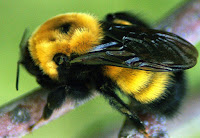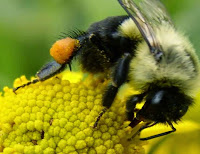BUMBLEBEE: INDEX or CONTENTS
Bumblebee Bumblebee: Definition Bumblebee: Biological Anatomy Bumblebee: Way of Life and Reproductive Cycle Bumblebee: Beehives and Nests Bumblebee: Food or forage and the attainment of Self Bumblebee: Speed attained in Flight Bumblebee : T heft at Floral Nectar Plants Bumblebee: "Cuckoo Bumblebee" Behavior and Morphology Bumblebee: Biological Taxonomy - Organization or Hierarchical Classification Bumblebee: Habitat Bumblebee: Geographic Distribution along the Globe Bumblebee: Important Economic Engine for Agriculture Bumblebee: Direct influence on Agriculture, to be used as a massive commercial pollinator Bumblebee: State Environment Protection and Preservation Bumblebee: The Flight of the Bumblebee: Viola or the Laws of Aerodynamics? BUMBLEBEE: INDEX OF CONTENTS The bumblebee ( Bombus ) is much more than just a large, fuzzy bee. This insect plays a vital role in our ecosystem and in agriculture, with unique characteristics that set it apart. This complete...








+on+clover,+Cuckoo+Bumblebee+Behavior+and+Morphology,+Cuckoo+Bumblebee+hives+or+nests+not+constructs+nor+numerous+ways+congregations+or+colonies.jpg)





